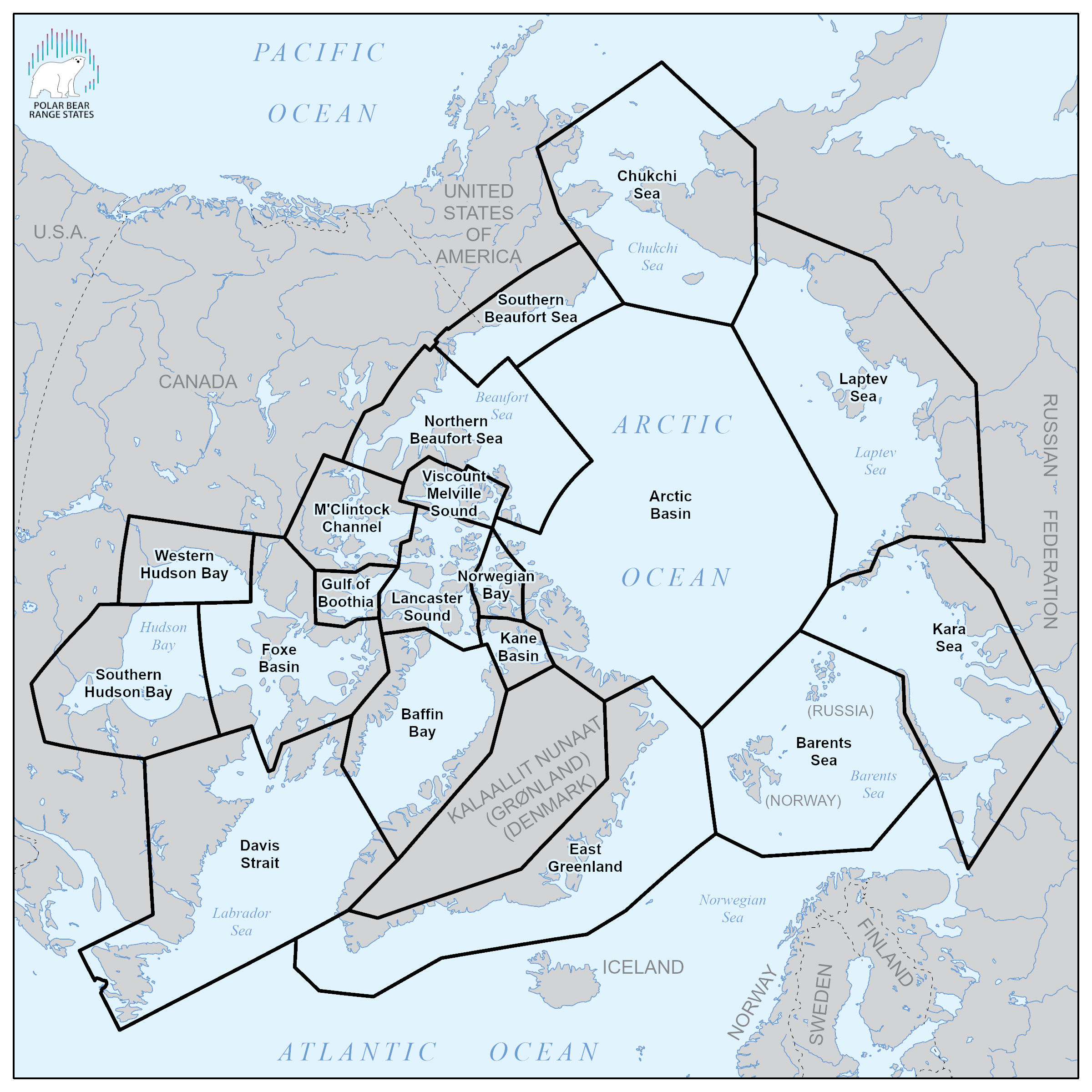 Polar bear subpopulation boundaries, as of July 2015
Polar bear subpopulation boundaries, as of July 2015
Across the circumpolar region, polar bears are managed on a subpopulation basis by federal governments and, in the case of Canada, provincial and territorial governments (i.e., jurisdictions) and Wildlife Management Boards. An examination of the 19 subpopulations reveals that four different situations exist, each of which requires specific management approaches:
- Subpopulation located entirely within one jurisdiction (Gulf of Boothia, M’Clintock Channel, Lancaster Sound, Norwegian Bay, East Greenland, Kara Sea, Laptev Sea)
- Subpopulation spanning more than one jurisdiction but located entirely within one country (Western Hudson Bay, Foxe Basin, Southern Hudson Bay, Viscount Melville, Northern Beaufort Sea)
- Subpopulation shared by more than one country, but within the exclusive economic zones of each country (Chukchi Sea, Kane Basin, Baffin Bay, Barents Sea, Southern Beaufort Sea, Davis Strait)
- Subpopulation shared by more than one country and extending into the adjacent high seas (Arctic Basin).
How the Range States have structured themselves to address each of the above situations is described in the National Management Systems and Bilateral Cooperation pages. None of the Range States have management regimes in place for the Arctic Basin subpopulation, although there are other international framework agreements in place that can help protect portions of this subpopulation. The Convention on Biological Diversity (CBD) and the United Nations Convention on the Law of the Sea (UNCLOS) are two such agreements. Under the CBD, each Party (Canada, Norway and Russia are parties, as is Greenland, through Denmark) is required to take action to protect components of coastal and marine biodiversity within its national jurisdiction. The CBD also requires Parties to cooperate to achieve conservation and sustainable use of biodiversity outside national jurisdiction, in the high seas and on the deep sea bed, as well as on other matters of mutual interest. It states that Parties to the Biodiversity Convention shall carry out their obligation to cooperate through competent international organizations, where appropriate.
The CBD also requires as far as possible and as appropriate, Parties to cooperate in respect of areas beyond national jurisdiction and on other matters of mutual interest for the conservation and sustainable use of biological diversity. CBD also states that Parties to it shall carry out their obligation to cooperate directly or, where appropriate, through competent international organizations.
The UNCLOS sets forth a comprehensive framework governing uses of the ocean, specifying rights of access and also duties to conserve living resources and protect and preserve the marine environment. Measures taken are to include those necessary to protect and preserve rare or fragile ecosystems, as well as the habitat of depleted, threatened or endangered species and other forms of marine life.
Under UNCLOS, coastal States conserve and manage the living marine resources under their jurisdiction are obligated to protect and preserve the marine environment within and beyond areas of national jurisdiction, and have the duty to cooperate in the conservation of living resources beyond areas of national jurisdiction, to share monitoring and assessment information, and to promote international cooperation in marine scientific research for peaceful purposes.
Source: Circumpolar Action Plan



